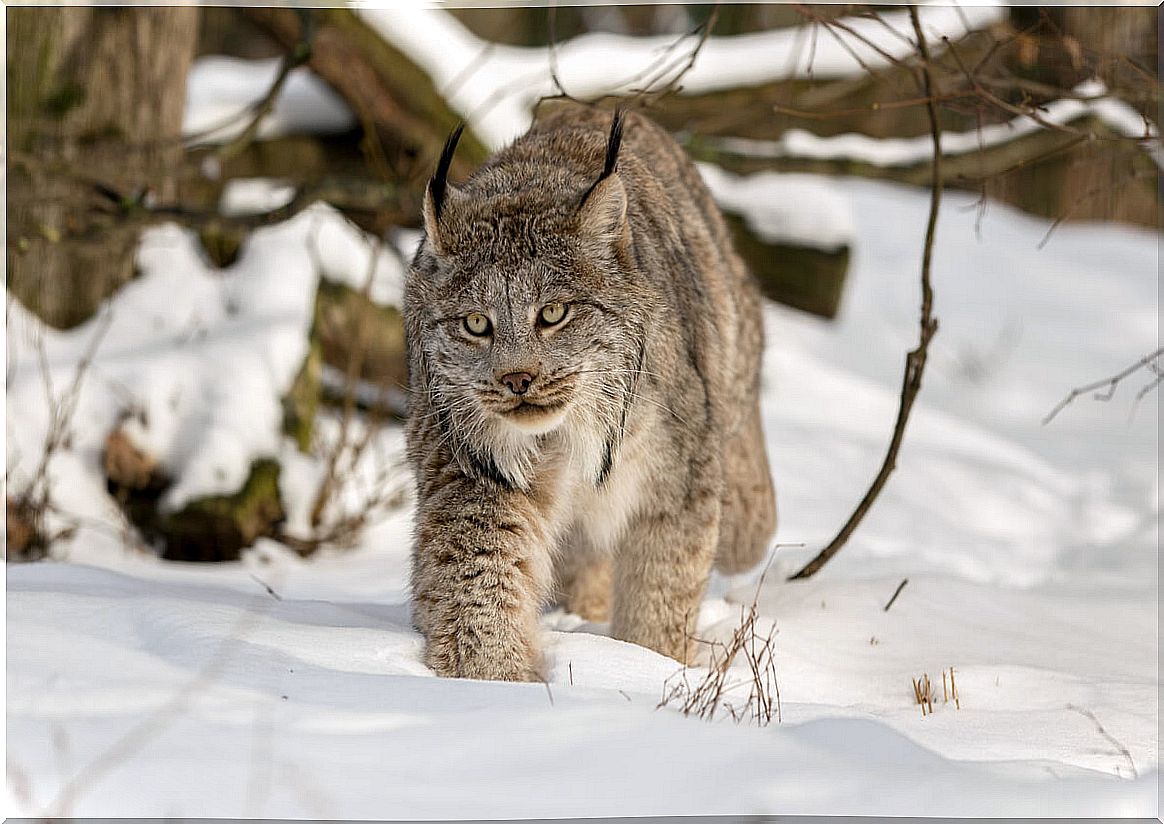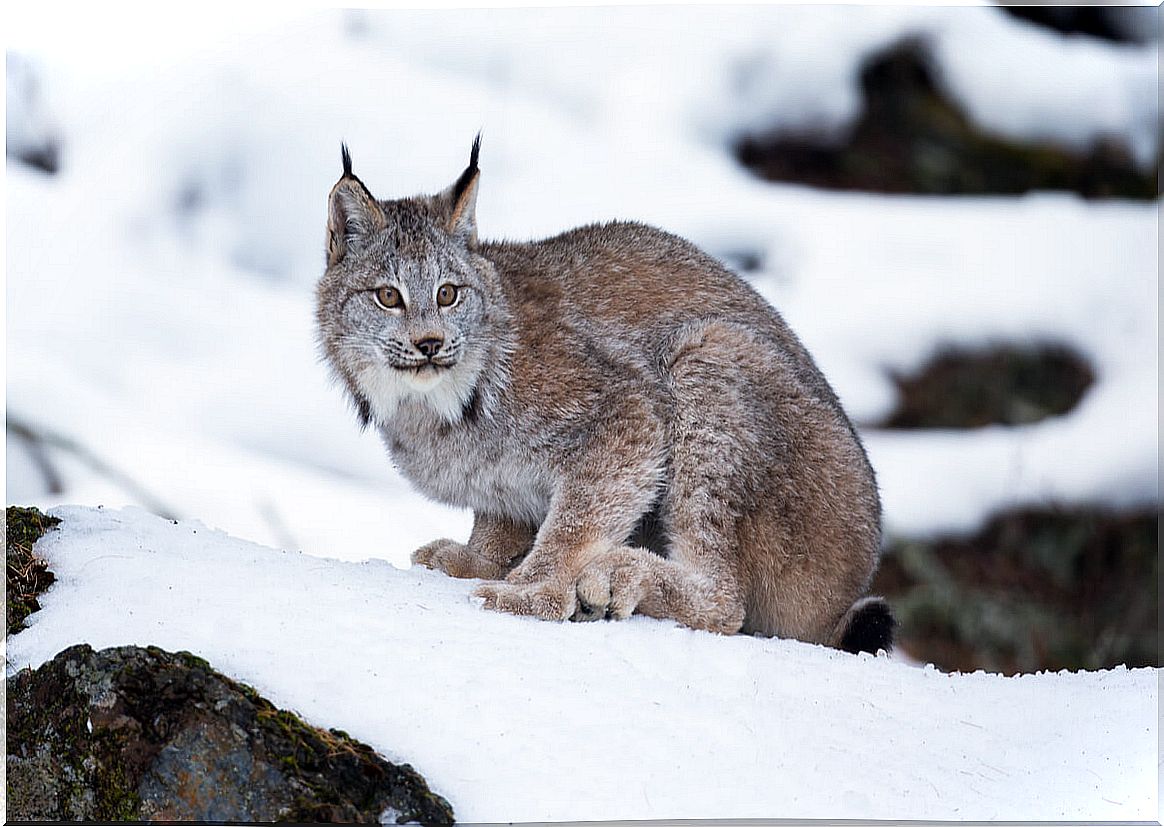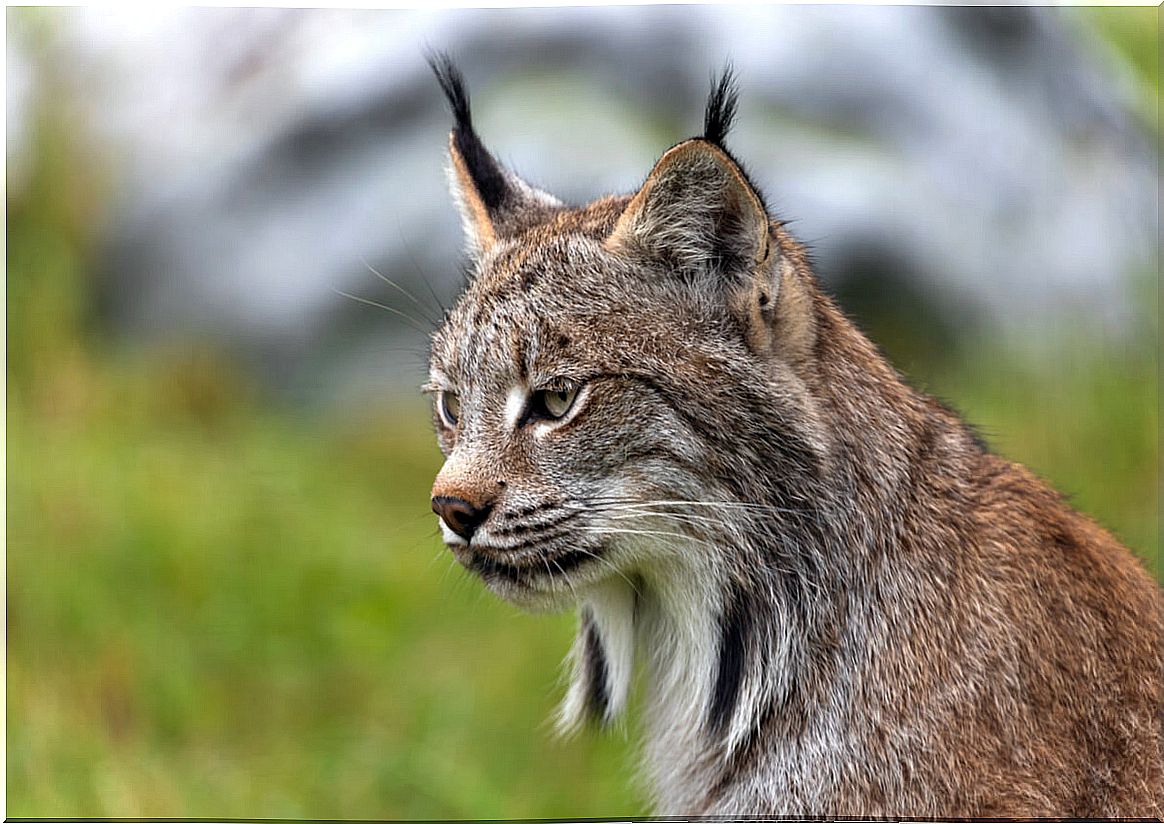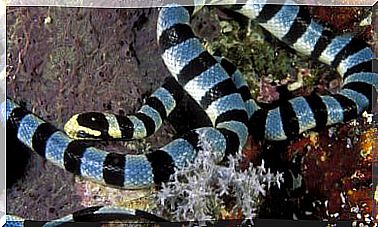The Canada Lynx: A Cat In A Worrying State

The Canada lynx ( Lynx canadensis ) is a majestic feline endemic to North America. Although it is not listed as “endangered” by the International Union for Conservation of Nature (IUCN), its current situation worries experts.
A recent study has shown that this feline only occupies 20% of its potential habitat. Why is this seclusion in an ecosystem with so many possibilities? We’ll tell you then.
A majestic felid
In the first place, we find it pertinent to describe the animal that is the object of this study. The Canada lynx is a medium-sized feline, an inhabitant of the taiga – the boreal forest biome – and a predator of small vertebrates that survive in snowy environments. Some of its characteristics are the following:
- It is a medium-sized feline, with a smooth, dense coat and a grayish color. It has triangular ears with very striking terminal black fringes.
- It measures about 100 centimeters from head to toe and weighs an average of approximately 10 kilograms. Of course, we are not dealing with an exaggerated animal.
- It has sharp retractable claws, which it is used to hunt its prey in snowy environments.
It is worth noting that we are dealing with a mammal that has been pressured by natural selection to acquire characteristics that favor its survival in snowy environments.
Its dense coat of fur insulates it from low temperatures, while its small size allows it to survive on small prey. Lastly, its powerful claws and wide legs perfectly support its weight, preventing it from sinking under the snowy surface.

The Canada lynx and its habitat reduction
A scientific article summarized in a National Geographic magazine publication in April 2020 reported bad news: the Canadian lynx only occupies 20% of its potential habitat in the state of Washington (United States).
In the aforementioned study, more than 7000 square kilometers were covered and the presence or absence of the lynx was recorded using photo-trapping cameras. Unfortunately, this feline activity was only observed in 29 of the 175 areas monitored.
In the first place and to understand these data, it is necessary to define that a potential habitat is that territory that, according to its ecological characteristics, can be considered as a possible home for a certain species.
Animals seek to expand their foraging areas, as this implies more resources, which translates into more offspring and an expansion of the species. If a population does not use an available space, something is wrong.
The case of the lynx
Indeed, the fact that Canada lynxes do not use 80% of the available habitat indicates that something is happening, either with the species itself or with the environment that they do not occupy.
The study that we have referenced previously places a clear culprit in this situation: climate change. According to these experts, lynxes are good sentinels to record environmental variation, as they are highly specialized in surviving in cold and snowy environments.
For this reason, forest fires, increased temperatures and a general reduction in snow cover have drastically restricted the survival area of these lynx populations.
In addition, as the climate softens in these snowy areas, other species of felines such as the bobcat or puma could appear, which would compete for resources and food with this majestic lynx.

A species close to threat
Again, it is essential to note that the Canada lynx is not yet threatened. This does not mean that the authorities of the states where the feline lives should relax: the data obtained is worrying and action is essential.
For this reason, it is necessary to continue monitoring the populations of this species and begin to devise captive breeding plans and possible future reintroductions into the wild. We cannot risk losing more species.









